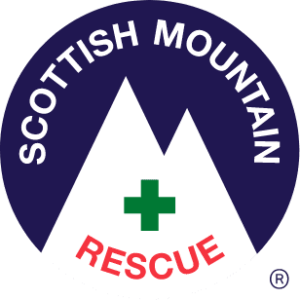The Importance of Planning for your Adventures

The Importance of Planning for your Adventures


The Importance of Planning for your Adventures
We are all eager to return to the glens, lochs, trails, and hills as soon as we can. It will be a delight to get out adventuring again, now the Covid-19 situation and its’ necessary restrictions have eased. But we also do not want to go head over heels (or handlebars) into the outdoors, as this may lead to injuries or accidents, which would be a shame having spent so long waiting for our outdoor freedom.
The return to the outdoors will likely need to be gradual, keeping in mind government guidance on social distancing and considering the safety of others. Scottish Mountain Rescue Teams remain active, however with adapted procedures that may mean a longer rescue time and additional work for the teams, such as the need to decontaminate all equipment post-rescue.
In order to mitigate the risk when we do return to the hills, we should plan our journeys thoroughly to ensure our adventures are, to the best of our abilities, safe and enjoyable, and with an awareness of easing your way into it, not overdoing it!
What to consider when planning an adventure
Many winter mountaineers and skiers will be familiar with the Scottish Avalanche Awareness Service’s Be Avalanche Aware planning framework. This basis of this framework is encouraging comprehensive planning for a winter hill day, taking in to account the following:
-The Avalanche Hazard, weather, and mountain conditions
-The individuals involved, their skills, experiences, and aims
-The landscape intended to visit
Whilst the Be Avalanche Aware framework was created with winter hill days in mind, it can be adapted for any adventure planning. The Avalanche Hazard may not apply currently, but the weather and mountain conditions still do, or, for example, the river levels or the inshore forecast for paddlers.
Planning
Have a look at several sources for weather information and compare them for a comprehensive picture of what to prepare for. Some options include the Met office, Mountain Weather Information Service (MWIS), yr.no, windy.com. Look at the weather on not only your target day, but the general trend. The weather ahead of your day may affect the condition you have, and be aware of the weather following your day in case it arrives early, such as increases in wind speed, changes in its direction, an oncoming storm etc.
Consider all the group’s skills, experience, and aims and communicate them. Different aims within the group can complicate decision making. Check the group has the correct equipment and the skills to use it.
Look at the terrain you intend to travel through and consider the terrain alongside the forecast you have. More complex terrain requires good navigation skills, especially in poor visibility. Or the wind speed/direction might mean it is better to do a circuit in reverse. It can also be helpful to use local knowledge, ask folk who have been there recently, check online forums and social media. Remember to check the date of someone’s report/ photos and be aware of the author’s bias; ‘good enough’ conditions for them might be unpleasant for you!
An important aspect of the BAA framework is the use of these factors in the decision-making process not only in the planning stage, but also on the journey, and at key places during the day. The framework emphasises looking ahead and considering all the options, and not falling into the trap of commitment.
Journey
It can be easy to relax on the journey, especially if you are chatting with friends! But keeping vigilant is important, as we all know how quickly conditions can change in the Scottish mountains. Ask yourself on the way; are the conditions as you expected? Is the group acting as expected?
Key Places
Decide on key places for your journey before you leave. A key place might be in the run up to a route decision – doing one summit or two, scrambling or climbing, etc. Having set key places gives you the space to make the decision before committing. Key places may also be somewhere, for example, you know to have a snack before a challenging section. Or it could be a time; at 17:00 you put your headtorch in an accessible place.
A framework such as the BAA model provides a structure that can be applied to different sports, just by changing the relevant environmental factors, not the process. The structure helps prevent overlooking essential details; it encourages looking ahead and considering all our options so that we do not overcommit but plan conservatively with the option to extend. It promotes clear and open communication within the group, empowering all the individuals involved.
Reflection
It is good practice to reflect on our adventures and use our experience to prepare for other journeys. When we reflect, we often focus on the parts that stood out, perhaps discomfort from cold weather, or if equipment worked well or not, etc. It is easy to overlook other aspects of the adventure in favour of these more immediate aspects. The framework can provide a structure for your reflection, so that we thoroughly consider the adventure, consolidate the experience, and learn from it.
As we look to those first hill days, keep in mind the importance of good planning and be aware of safety. Err on the side of caution for now; it is not the time for unnecessary risk. It will still be an adventure and an absolute joy for all of us when we can get out again into the fantastic Scottish outdoors.
Thanks to Bill Strachan at Glenmore Lodge for input and the Snow & Avalanche Foundation of Scotland for the graphic. The Be Avalanche Aware framework can be found at beaware.sais.gov.uk Further information and links on mountain safety can be found on the Scottish Mountain Rescue website under ‘Safety Advice’.
Please visit our Covid-19 Guidance page for more information.